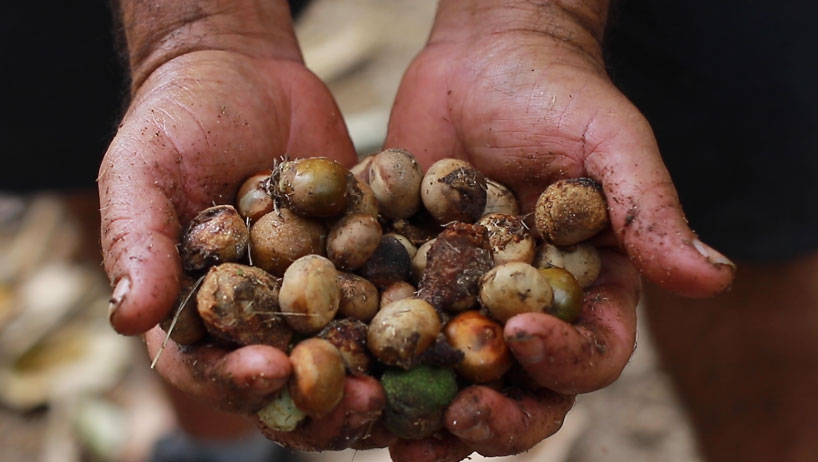
I set off one morning with my friend José Lorenzo Garcia to collect capomo. We walked for about thirty minutes before we reached an area of Jose’s land, called Habita, high in the dry forest of Cabo Corrientes. There we found a tall capomo tree at the foot of a steep bank covered with a variety of veining flora. Around the base of the tree and beyond we collected the fallen capomo nuts or seeds, which are about the size of a round grape—some with green skin dotted with tiny bubbling dots and others a smooth brown, having been denuded by the bats the night before. The bats eat the thin-skinned fruit off the seed and then drop the seed for us to collect. While we were gathering, José explained that January through March is the best time to collect capomo. Some trees bear fruit every year; others biannually. Our four-footed animal friends—pigs, cows, and horses—also love capomo. Cows that are fed capomo leaves produce one to two liters more milk per day than cows fed on pasture, and pigs grow larger and healthier.